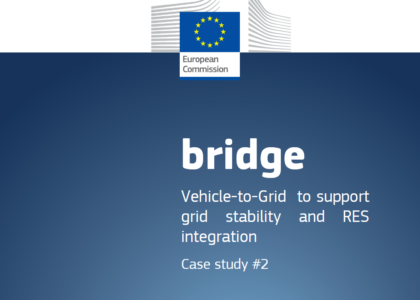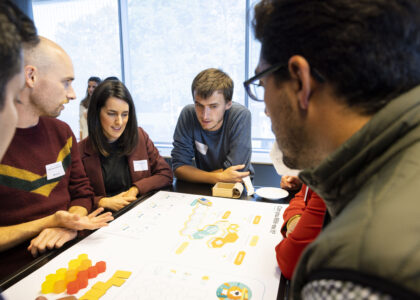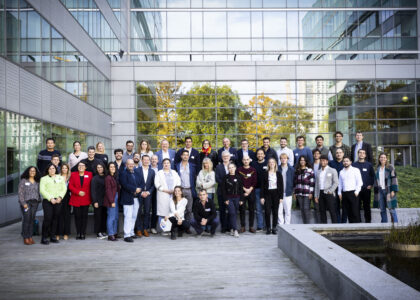by Walter Brosius, project manager @Vrije Universiteit Brussels
Last month our Replication team travelled to Relleu in Spain to run another community engagement workshop to discuss and evaluate future energy scenarios. Relleu is a village of approximately 1,300 inhabitants in the hills near Alicante, Spain and is surrounded by olive and almond farms. In Relleu, there is a newly built compound of 37 houses which is the subject of this pilot site. This community has a strong interest in renewable energy systems, in particular solar PV, and is exploring all avenues to achieve this goal. It has a well organised Home Owners’Association which governs all decision making that apply to the exteriors of the houses and the commons. Most owners are foreigners and typically from The Netherlands and Belgium and only a minority are from Spain.
Objectives of the engagement workshop in Relleu
The set-up of the engagement strategy in Relleu was different than in the other replication sites because this residential area was the first in which no previous initiative or intention for developing an energy community (EC) had been set up. Even though a lot of potential is present, with an Owner’s Association entity already in place, an abundance of sun, and residents willing to invest in renewable energy, a survey that was distributed beforehand showed that knowledge on what an energy community encompasses is low.
The main goal therefore was not to assess the different potential energy solutions, but rather to start with the first step in the process: introduce citizens to the concept of an EC and what it entails. The objective of the workshop was foremost to increase local knowledge by providing information in an interactive way on what an energy community is and what it could look like for Relleu specifically. The workshop eventually allowed to test whether the incentive to establish or join such an initiative also increased in line with the participants’ awareness levels.
Since the case and its context is representative for many other places in Southern Europe, the results of this exercise provide useful lessons on what is necessary to incentivise citizens to start their own EC project.
Workshop steps
The potential energy community is still at its infancy stage and needs a lot of awareness raising and information gathering and it is for this reason that a small group of key homeowners joined the workshop. There are basically two kinds of owners: those who live permanently in Relleu and those who visit occasionally. This makes for a rather interesting perspective, but at the same time, this is a very typical site in a sense that many communities in the Spanish coastal regions are owned by foreigners. This workshop will therefore allow for the testing of the MAMCA methodology in a way that isn’t done in the other replication sites yet.
The Multi-Actor Multi-Criteria Analysis (MAMCA) methodology and its software were used as a tool throughout the different workshop steps. The 3 hours long exercise consisted of the following parts:
- A small introductory presentation on the ins and outs of renewable energy in general and energy communities specifically
- A ‘live’ survey with discussion on the residents’ needs and wants from an energy initiative. Importance weights were then attributed to the selected objectives by all participants
- An interactive session in which the participants were divided into 2 groups, that ‘build’ their own energy community scenarios, with the help of presented building blocks and a moderator with expertise in the matter.
- Evaluation of the build scenarios for all participants, by scoring their consistency towards selected objectives, through a MAMCA software exercise. The results were discussed in group
The first part, that produced some essential basic information, was deliberately kept short, to be able to focus on the interactive parts of the workshop. In the survey a long list of potential objectives for joining an energy initiative were provided. By having to indicate the importance of each objective for them personally, the ten participants were obliged to think about not only what they could get out of it but most of all what they would want to get out of an EC. The joint discussion on what they filled out let them get acquainted with different perspectives, and showed them all points of view that would have to be taken into account if they were to initiate a joint project.
In the scenario building work session, the participants were introduced to all the components of an EC and all the questions that needed to be answered when deciding upon the structure of a community. By discussing each of the presented themes (visualized as ‘building blocks’) they were incentivized to think about which assets they would like to install, how they would be able to join the initiative, how investment costs would be divided, what legal form they would prefer etc. The session also nudged them towards consensus forming by letting them discuss within their working group what each of the building blocks should look like.
In the last workshop part the participants could reflect on whether the build scenarios complied with their previously selected needs, by giving scores. The overall resulting scenario ranking was discussed, and gave an insight into the points of attention and hurdles that would need to be overcome, whether the benefits of an EC outweighed the efforts, and the potential differences between the participants that would require further consensus forming.
Results
The workshop discussions as well as the pre- and post-survey on awareness raising led to a range of various insights into participant motivations and workshop effects.
Although, for the majority of the participants, financial drivers are the main motivation to join an energy initiative, this was less relevant for some. Social as well as technical objectives such as energy independence, grid reliability, safety and energy poverty reduction were all mentioned multiple times as essential objectives. The mutual discussions provided an overview of potential objectives which widened the initial range of personal motivations.
The scenario building workshop allowed participants to better understand the complexities of (the set-up of) energy communities because it let them get acquainted with all the decisions that have to be made (collectively) and the information that needs to be collected.
Various types of a energy communities scored better on the objectives of all participants compared to a business-as-usual scenario. Although they were scared off a bit at first by the complexity of the matter, this understanding as well as the gained knowledge made them motivated to start taking concrete action for a joint energy initiative as a result of the workshop.
All participants indicated in the survey afterwards that their knowledge on joint renewable energy initiatives had increased thanks to the workshop. This also raised their awareness of the benefits and their willingness to join or even set up an individual or joint energy initiative in their neighbourhood.
Their estimate of the probability that most neighbours could come to an agreement to start a joint project was also significantly increased after the workshop. The mutual discussions and consensus forming during the exercises showed that all participants’ intentions were relatively similar and all points of views could be mutually understood and taken into account. Everyone indicated that their awareness of other participants’ viewpoints was increased and that they felt that their input was taken into account and could have an impact on the end result.
Conclusions
The tested engagement process using the different steps of MAMCA had a significant effect on the awareness and knowledge of the participants regarding joint renewable energy initiatives in general and energy communities in specific. This directly resulted in a greater willingness for immediate action towards a joint local initiative.
Potential savings in the energy bill are the main motivator to join an common energy initiative, but the workshop showed us that uncertainty about each other’s motivations and a lack of knowledge on what an EC (process) contains are still a major drawback for many people. When a better insight in both can be offered, motivations go up. The developed engagement format worked on this account and received positive feedback from the participants.
Follow us:




